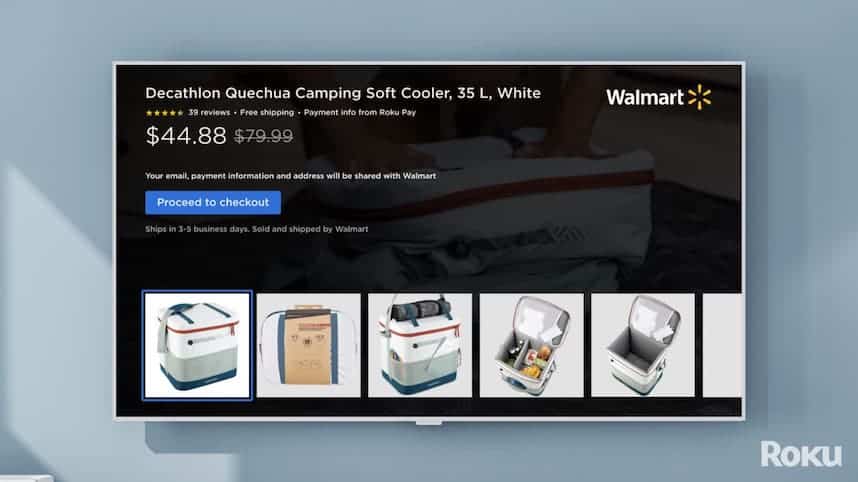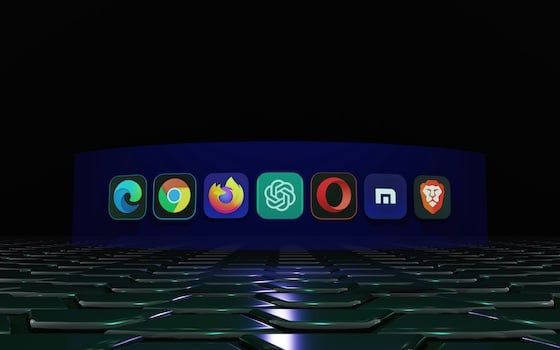Shoppable content continues to extend its reach into the digital channels that surround us. Once the domain of eCommerce websites, fully-contained shopping flows are everywhere from Instagram Stories to YouTube videos. The shopping O.G., Shopify, has jumped on this trend as we examined yesterday.
Now, the latest shoppability play comes from Roku, bringing us the long-discussed concept of shopping directly on your television (T-commerce). Of course, this isn’t a new notion given networks like QVC. The difference is a more integrated experience that brings eCommerce-like functionality to your TV.
Specifically, this all comes about through a partnership with Walmart to serve as an additional digital channel into your living room. The idea is to bring Walmart’s vast online product category to 61+ million Roku users. This is just the latest in a string of moves in Walmart’s developing eCommerce playbook.
T-Commerce
Going deeper on the dynamics and UX of the new shopping integration, shoppers can click a new overlay on Roku-delivered banner ads to buy a given product. Those banners join the existing fray of ads that Roku delivers throughout its interface, including when a given show is paused.
One of the benefits here is that the entire shopping flow can be self-contained. Aligned with a key tenet of the shoppability movement, users aren’t whisked away to Walmart.com. Rather, they can buy items right on the spot with their Roku remote, using the same payment method they use to buy movies.
This eliminates some friction from traditional methods of making content on your TV shoppable, such as QR codes. The same friction is reduced for Walmart (and any other ad partners that follow), in that this shoppability is now baked into Roku’s OneView ad-buying platform. So we could see more of this.
Notably, all of the above comes at an opportune time. As we’ve examined, streaming and connected TV (CTV) advertising is experiencing a surge. This is mostly due to the privacy-inflicted ad-world shifts that are causing budget to shift from behavioral targeting (e.g. social ads) to contextual targeting.
That brings back the heydey of pre-digital advertising when ads were placed based on adjacent content. Here, Roku could presumably do a bit of both – contextual targeting informed by whatever movie or show is playing, and some behavioral targeting based on their purchase activity from these new ad units.
The latter is legit in privacy terms because utilizes first-party data. It’s not sharing, selling, or buying user data from an ad network but simply utilizing the self-contained data from purchases under Roku’s own roof. Along with contextual targeting, this first-party advantage is a big factor in the privacy-first era.
Breaking Habits
For all the above reasons, video-based shopping continues to gain steam under the broader umbrella of shoppability. YouTube has been making moves for a few years to make its content more shoppable, given the organic commercial intent that’s endemic to things like product reviews and how-to videos.
Roku’s latest move stems from that branch, but it’s not the only action lately. We’ve been collecting examples of other video-based shopping integrations (albeit not “T-commerce”), including YouTube’s new Shoppable Shorts and Softbank’s $150 million investment in shoppable video startup Firework.
We’ll keep watching as the large screen gradually becomes a shopping touchpoint. It will take time for cultural acclimation to use a TV remote for shopping. After all, habits are hard to form and break so this could hit a wall at some point. But it’s worth watching as a segment of Shoppability’s continued rise.



